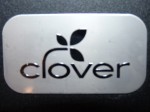Learn how to love coffee

Make Better Coffee
Complete this simple form to get Nate's email mini-series and absolutely transform your coffee experience!
COFFEE DEALS!
Coffee Friends
Categories
- Announcements
- Black Friday Deals
- Brewing Methods
- Coffee & Health
- Coffee Accessory Reviews
- Coffee Brewer Reviews
- Coffee Certification Programs
- Coffee Commentary
- Coffee Events
- Coffee Grinder Reviews
- Coffee Humor
- Coffee Origins
- Coffee People
- Coffee Processing
- Coffee Reviews
- Coffee Shop Reviews
- Coffee Terms
- Coffee Tips
- Cyber Monday Deals
- Direct Trade
- espresso
- Espresso Machine Review
- Fair Trade
- Get Ready
- Gift Ideas
- Guest Posts
- home roasting
- How To
- Last Minute Deal
- Lists
- Monday Morning Meme
- National Coffee Day Deals
- Podcast
- Premium Coffees
- Single Serve Coffee
Copyright © 2025 · CoffeeNate.com · Privacy Policy




The Clover Coffee Brewer :: Great Northern Roasting Company
Disclosure: I may receive compensation when readers purchase products after clicking links on this site. This does not affect my opinion or the price you pay, but does help support my work. Reviewed products may have been provided at no cost.
Have a coffee question…ASK COFFEENATE!
A couple of months ago I was griping about never having tasted coffee brewed in the Clover. Now that the Clover is owned solely by Starbucks appeared to make my quest to taste superb coffee brewed by this method in vain. Even if I wanted to experience the Starbucks coffee brewed in the Clover, I would have to drive more than 400 miles to the nearest Starbucks that offers Clover brew. I was lamenting this sad fact on Twitter one day and I was surprised by the response I got.
One of my followers, @RoasterJack piped up and claimed to have a Clover brewer…an d he lives a mere 3 hours away in Traverse City Michigan! We tweeted back and forth a bit and I was already planning a family trip to Traverse City, so I scheduled in a little me time 🙂
d he lives a mere 3 hours away in Traverse City Michigan! We tweeted back and forth a bit and I was already planning a family trip to Traverse City, so I scheduled in a little me time 🙂
Roaster Jack Davis : GNRC
@RoasterJack is Jack Davis, the master roaster behind Great Northern Roasting Company. Jack was more than willing to share his story and journey of coffee geekery, and I was even happier to listen! Jack is a really friendly guy and his company is something I’m a bit envious of. Great Northern Roasting Company (GNRC) began in 2001, and features globally responsible coffees from all over the world. GNRC engages in a direct trade model. A while back I shared about what “Fair Trade Certified” is, and it is a great program, BUT speaking specifically about coffee, there are ways to do better than Fair Trade. Fair Trade, while assisting producers in getting a better price and in educating them, has no system in which the quality of the coffee is measured. Some roasters green-wash their labels to make it appear as if they are engaging in sustainable practices, but often consumers are left to rely on the word of that coffee company. With GNRC’s system, the consumer can go online, enter the code on their bag, and trace that exact coffee! Jack is really excited about a new line of coffees from GNRC, “Birds Bees & Trees” Here is how they describe it “Eco-friendly coffee that protects bird habitat, preserves standing timber AND donates 3% of all proceeds to saving honeybees from colony collapse disorder (via the Pollinator Partnership). Sustainable, Traceable and Organic.”
Oh yeah, The Clover!
Jack gave me a complete rundown of the Clover coffee brewer too, which is now in their espresso lab. His company was one of the very first to jump on the Clover bandwagon and pay its hefty price tag of $11,000 back in 2006. He realized that this brewer was something special. For the first time ever, every aspect of the brewing process could be precisely controlled and repeated. What I, and other coffee snobs, like about this brewer is that it combines two renowned brewing methods (french press and syphon/vac pot) gels them together, whle adding a huge element of control. The Clover has the ability to draw out and highlight the most special nuances inside each type of coffee. With so much control, you can also make the world’s worst cup of coffee with the Clover 😉 There are so many variables in the brewing process, and each of these can be tailored precisely for each varietal. Once you determine the optimum settings, you can store them in the Clover as a preset. These are referred to as recipes, and originally all Clover coffee brewers were online and you could actually track what each brewer was doing in every shop all over the globe! Shop owners could draw from the experience of other owners to quickly dial in a particular coffee.
back in 2006. He realized that this brewer was something special. For the first time ever, every aspect of the brewing process could be precisely controlled and repeated. What I, and other coffee snobs, like about this brewer is that it combines two renowned brewing methods (french press and syphon/vac pot) gels them together, whle adding a huge element of control. The Clover has the ability to draw out and highlight the most special nuances inside each type of coffee. With so much control, you can also make the world’s worst cup of coffee with the Clover 😉 There are so many variables in the brewing process, and each of these can be tailored precisely for each varietal. Once you determine the optimum settings, you can store them in the Clover as a preset. These are referred to as recipes, and originally all Clover coffee brewers were online and you could actually track what each brewer was doing in every shop all over the globe! Shop owners could draw from the experience of other owners to quickly dial in a particular coffee.
Special valves under the filter plate
Another feature of the Clover is its use of a PID (proportional integral derivative) controller. What’s that you say? It is like an intelligent thermostat of sorts. Water temperature plays an absolutely vital role in the coffee brewing process. A fluctuation of as little as 1 degree can make or break a cup of coffee. The problem with most temperature controls is that they are either %100 ON or %100 OFF. Like your stovetop element, when it drops below a certain temperature, the element is turned on and the heat is full on, quickly heating until it reaches the set temp where it is then deactivated and full off. This process leaves the element hot even after it is turned off, continuing to increase the temp. The PID device holds the water at an exact temperature due to its ability to control the amount of heat output and ‘coast’ into the desired temperature.
Unfortunately for Jack (and the countless other independent owners of Clover brewers) the Starbucks corporation also saw the value of the Clover. In 2008 Starbucks purchased the company that developed and manufactured the
Top view with filter removed
Clover, effectively pushing out every independently owned brewer. Starbucks paid a ransom and now they owned the brewer, the online software, the parts etc. I’m sure they’re more than happy to allow their competition to access all that stuff. 😛 Yeah right. So independents like Roaster Jack were left holding the bag, while Starbucks took the Golden Goose. Why did Starbucks buy Clover? To reestablish themselves as cutting edge, inject theater, or was it to stifle the buzz being created by independents? We can only speculate, but expansion of the Clover into smaller market Starbucks locations hasn’t quite materialized, leaving me to wonder what was the point. There is not a single Clover brewer in a Starbucks in the state of Michigan, but thankfully…there is Roaster Jack’s in Traverse City 🙂
Say something!